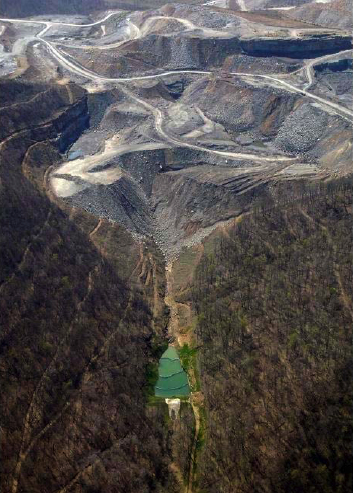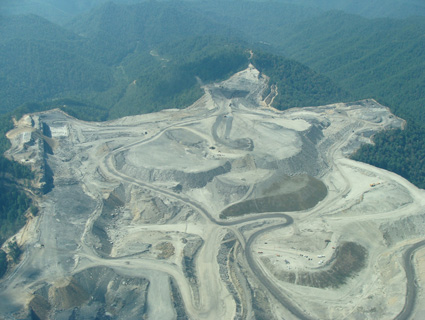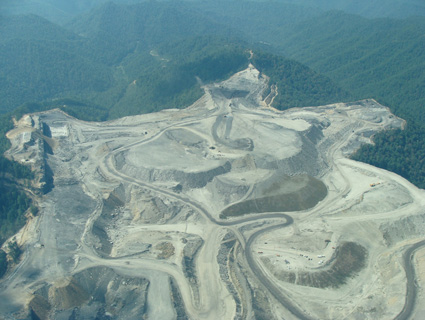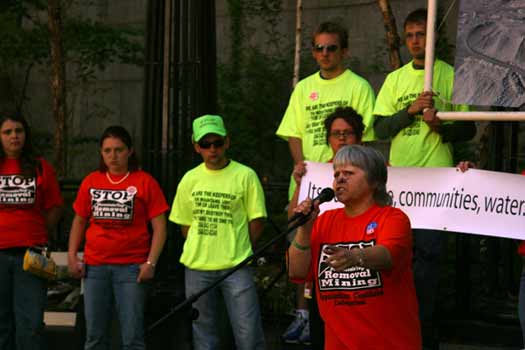
<a href="http://www.flickr.com/photos/nationalmemorialforthemountains/4535374630/sizes/m/in/photostream/">iLoveMountains.org</a>/Flickr
Communities near surface mining sites suffer much higher rates of cancer than other parts of West Virginia, according to a new study published this week in the Journal of Community Health. The researchers conclude that there are likely thousands of additional cases of cancer in communities near mountaintop removal sites.
West Virginia University researcher Dr. Michael Hendryx conducted the study in several West Virginia counties earlier this year, comparing rates in a county without mountaintop removal coal mining to two where the practice is taking place.
Jeff Biggers sums up the study over on Alternet:
“A door to door survey of 769 adults found that the cancer rate was twice as high in a community exposed to mountaintop removal mining compared to a non-mining control community,” said Hendryx, Associate Professor at the Department of Community Medicine and Director of West Virginia Rural Health Research Center at West Virginia University. “This significantly higher risk was found after control for age, sex, smoking, occupational exposure and family cancer history. The study adds to the growing evidence that mountaintop mining environments are harmful to human health.”
Nationally, 3.9 percent of Americans are cancer survivors, according to the Centers for Disease Control, but the rate in West Virginia is as high as 9.4 percent. This door-to-door survey found that the rate in the parts of the state affected by surface mining is actually 14.4 percent—a full 5 percent higher than the rest of the state. If the rates were projected across the 1.2 million people living in the region, that would mean as many as 60,000 additional cancer cases.
This report follows a study released last month from researchers at West Virginia University and Washington State University that also found higher rates of birth defects in communities near mountaintop removal sites. The ever-classy coal industry attempted to blame this on inbreeding rather than toxic mining pollution. I wonder what kind of defense they’ll offer for this latest study.














